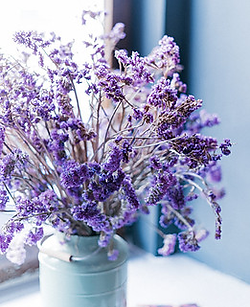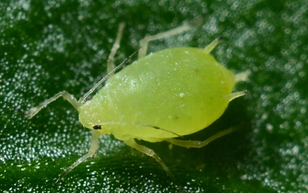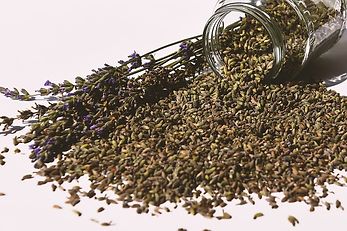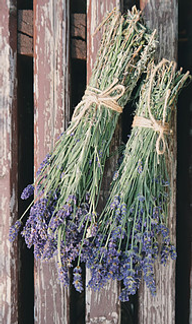
Fields of lavender can be found in many places in the world. They are a beautiful sight to behold. Not only is lavender a visual beauty, it also awakens your olfactory senses. This fragrant herb is rather easy to grow and maintain. It has many uses from culinary to medicinal. However, you may want to grow it just for its sheer loveliness in a garden or indoors next to a window. Read on to learn how to grow lavender plants indoors.
How to Grow Lavender Plants Indoors
Lavender (Lavandula) is a perennial that when planted outside will attract many pollinators including bees and butterflies. It is native to the Mediterranean, the Middle East, and India where the winters are cool and moist and the summers are warm and dry.
Lavender can be an indoor plant. It is useful to have the plant growing indoors so you can benefit from both its aromatic scent and its convenience to you.
Light Requirements
Lavender thrives in full sunlight outside, so when keeping an indoor lavender plant be sure to supply it with as much light as possible in your home. Place it in a south facing window (northern hemisphere; north facing in southern hemisphere). It will receive close to 6 hours of full direct sunlight. If you do not have a south facing window, place your plant in a west facing window (east for southern hemisphere). It will receive extended hours of light there.
There is a correlation between sunlight and flowering ability. The more sunlight the plant receives, the more blooms your lavender will have.

If you do not have either a south or west facing window, supply the plant with artificial lighting. The artificial lighting will prevent the lavender from getting too leggy and spindly. A good indoor lighting kit called Plant Grow Light for large plants from Amazon.
Be sure to rotate your plant weekly so it grows straight.
Soil Requirements
Lavender is not fussy when it comes to soil. Supply it with a moderately fertile, sandy, and aerated soil for best results. If making your own soil, it should contain 30% sand or grit and 70% potting soil thoroughly mixed. The plant will benefit from an alkaline soil. You do not want the soil to be too fertile because it will produce more leaves and stems rather than flowers.
Here is a good lavender soil from Amazon.
Water Requirements
Lavender is drought tolerant. Only water it when the top inch of soil is dry. Stick your finger into the soil to determine whether or not it is dry. Water new lavender plants once per week. Give a thorough watering for established plants only when needed, usually once every two weeks.
Water directly into the soil, not on the foliage.
Fertilizer
Lavender does not need to be fertilized. It will grow well without it.
Troubleshooting
Too Much Water
If your lavender looks like it is dying, that is drooping, wilting, browning or yellowing, it is probably because you are over watering it and/or it is not draining well. The soil must drain well so the roots do not retain water and rot. Be sure to only water when the top one inch of the soil is dry. Less is more.
Not Enough Sunlight
Another reason could be that it is not receiving enough sunlight. Place it where it receives the most direct sunlight in your home; close to 6 hours of direct sunlight.
Not The Correct Soil
Check the soil acidity. Lavender prefers a pH between 6.5 and 7.5 which is slightly acidic and moderately alkaline. Check the pH with Test Kit from Amazon. If the alkaline levels are below 6.5 (more acidic) amend the soil with garden lime or dolomite lime. Follow the instructions on the package to increase the pH level. Most potting mixes are pH neutral (pH7) and are suitable for lavender.
Infestation of Insects
Lavender is usually insect and animal resistant due to its powerful scent. However, there are a few insects that will attack a lavender plant.

Spittlebugs excrete frothy spittle when extracting nutrients from a lavender plant. The spittle surrounds their nymphs and protects them from drying out and from predators. Even though it sounds damaging, the spittlebugs really do not damage the plant unless the lavender is completely covered with the spittle. Remove the clumps of spittle by hand. Insecticides will not work because the spittle protects the nymphs.
If you have distorted foliage or dropped leaves, you probably have aphids. They attach themselves to the leaves, suck sap, and then secrete a honeydew-like glop. Wipe the leaves clean with a soft cloth or spray the plant with a mild solution of water and dish soap.
Whiteflies cause yellowing of leaves and leaf droppage. They look like tiny white moths covered in powdery white wax. Both the nymphs and adults suck the sap from the plant. Since they fly when the plant is disturbed, it is difficult to rid the plant of them. Try spraying them with a strong stream of water.
Diseases
The biggest problem with lavender is the alfalfa mosaic virus. It can be in many commercially grown plants. It weakens the plant and makes it more susceptible to other diseases. Aphids usually spread the virus so watch for aphids on your plant and mitigate the problem as soon as they are observed. Once the plant is infected with this virus, it is very to eliminate.
This virus presents itself as distorted splotches in a mosaic pattern.

Purchasing a Lavender Plant
You can start a lavender plant from seed from Seeds Now or purchase it already established.
From Seed
1. Purchase your seeds, seed trays and a very light soil mix, seed starting mix or fine vermiculite that drains quickly.
2. Fill the seed trays with the soil.
3. Place the seeds on top of the soil, slightly covered. They need sunlight to germinate so place them in a south facing window. They can take up to a month to “pop” or as little as 2 weeks.
4. Water the seeds every morning for 2 to 4 weeks until they sprout.
5. Once the plant has produced several leaves, it can be transplanted.
Store Bought Plant and Repotting
- Repot your plant early in the spring before there is active growth.
- Prepare your pot with well drained soil AND a pot with numerous drainage holes in the base. Place about 1 inch of small pebbles in the bottom of the pot to prevent compacted soil from reducing drainage.
- You will probably need to repot your plant yearly. Choose a pot approximately 1 to 2 inches larger in diameter than the ball of the plant. They like to be snug in their pots.
- Remove the plant from the pot and untangle the roots to promote outward growth.
- Plant the top of the lavender ball even with the top of the soil level; approximately 3/4 of an inch below the rim of the pot.
- Water it thoroughly and place it in a south facing window allowing it to receive as much light as possible.
Lavender takes about 3 years to reach their peak.
Pruning and Harvesting Lavender
Pruning
Prune the lavender after it has flowered in late summer and again in early spring. The pruning will also keep the plant in a mounding form. Prune all spent flowers and long leggy stems; remove up to 2/3 of the plant. Trim 2 inches above the woody stem. Watch the video below for more in depth instructions on how to prune lavender. This will guarantee new flowers for the coming season since they only flower on new growth.

Harvesting
Harvest the flower stems just before the flowers have opened in the spring. Use sharp scissors and cut them 2 inches above the woody stem or at least 6 to 10 inches below the lavender buds. Gather them in a bunch, tie them with twine and hang them upside down in a warm, dry area avoiding direct sunlight for drying. They will dry in a few weeks. Then gently shake the stems so the buds and flowers fall into a container. Seal the container to preserve its aroma.
Uses of Lavender
There are many uses of lavender. It has been used in medicines, food, crafting, and just for pure beauty.
Lavender is also used in cosmetics, sachets, soaps, candles, and potpourris.
Refer to Common Uses of Lavender for more information on the uses of lavender.
Final Thoughts on How to Grow Lavender Indoors
Lavender has many uses and can easily be grown indoors. Follow the instructions above to ensure your plant will grow and thrive for many years to come.
Light requirements: 6 hours of full sun
Soil: moderately fertile, sandy, aerated soil
Water: water once a week for new plant; once every two weeks for a mature plant. Do NOT
overwater. Use the finger test.
Fertilizer: no need to fertilize
Pests and Diseases: watch for aphids, spittlebugs and alfalfa mosaic virus
I hope you enjoyed this post. Please share it with others and leave a comment below. I’d love to hear from you.



